We need ecosystems to synchronize skills-not a single system of record: Bhavin Patel, Degreed
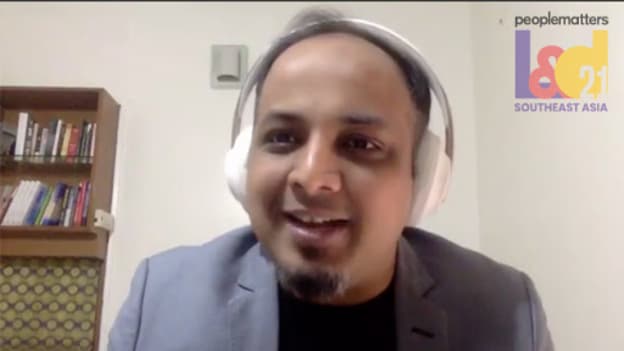
If organizations want to navigate and steer the waters of disruption in 2021, then the idiosyncrasies of traditional skills will have to go. In this year, we will see a rise and shift in the skills, and a new set of power skills will come in.
In a conversation at the PM L&D SEA Conference 2021, Bhavin Patel, Director Sales, Degreed threw light on how can organizations prepare for what they don’t know because it is changing so fast. And how upskilling, reskilling, and cross-skilling can be adopted for the workplace of tomorrow and will help employees see their future with the organization.
Bhavin touched upon three facets of maneuvering the skill shift-first being identifying the skill gap in employees, second- developing an ecosystem to synchronize skills, and third-improving employee experience by linking skills to performance.
Identifying the skill gap in employees
Bhavin kickstarted the conversation by stating that when it comes to identifying the skill gap in employees, the equation for this is simple: if you know what skills your business requires and the skill data of your employees, you should get the delta of the skill gap-but it is not as simple as it looks like.
In current times, COVID has accelerated the skill gap and employees are stressed about upskilling. Even businesses are really struggling to see what skills are needed to make them successful. As per The State of Skills Report by Degreed, almost 53% of HR leaders say that the inability to identify needed skills is the biggest impediment to workforce transformation.
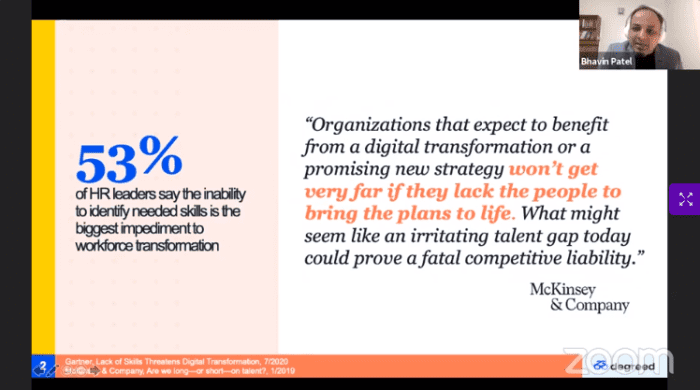
One of the challenges which HR leaders face is access to better technologies to monitor workforce skills. If one looks at the equation again, there are two unknown factors in it-what skills businesses will require and the current workforce skills. Hence organizations need to focus on both these elements. For this, Bhavin suggests we need to simplify what we are capturing and what data are we looking at. Or what we call the skill data.
Skill data currently relies heavily on surveys, assessments, ratings. But it should be more than just the skill assessment data-it should look at what kind of content are employees trying to access, what kind of activities are they doing beyond the learning activities to upskill themselves, and some other user data. Bhavin recommended that organizations should try to build this data organically and use it as a benchmark.
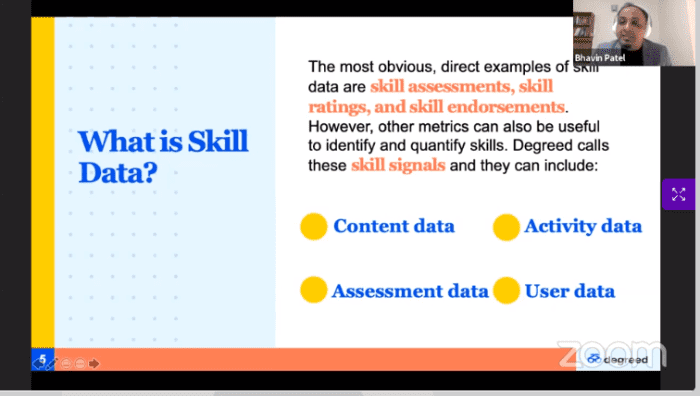
Developing an ecosystem to synchronize skills
Delving further into the challenges with skill data, the most pressing one is that most organizations do not have a record of up-to-date skill data. While there is no single answer to where the most up-to-date skill data of employees exist, Bhavin shared that HR teams have the highest amount of confidence in the data with them in the HR systems-around 45%.
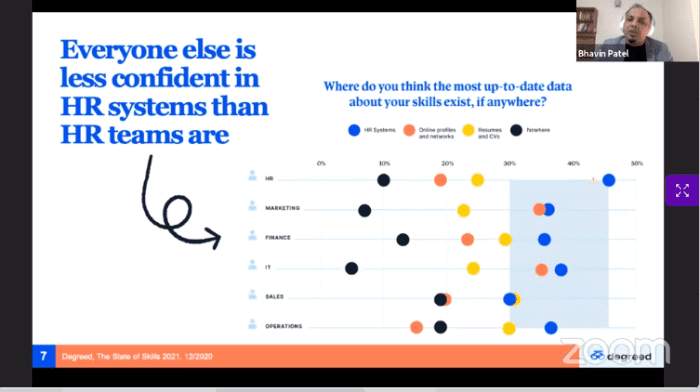
However, even the data lying in HR systems is not a true reflection of the skill profile of their workforces. The truth is that organizations cannot rely on one single source of record data to assess where the skill data is.
"You need a larger strategy to synchronize the data points coming in from all the places," reflected Bhavin. Organizations need to start looking at their employee life cycles for that-right from onboarding to assessments to performance reviews to content platforms to LMSes.
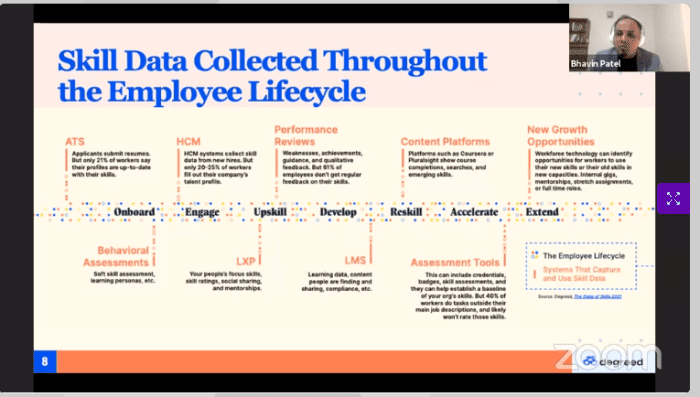
Improving employee experience by linking skilling to performance
The third important facet centers around skilling and performance. One major challenge that organizations face is how do they link skills to performance. This has especially become a pressing issue accelerated by the pandemic.
Bhavin suggests while formulating any strategy, be mindful that the workforce's well-being is at the center of it as the workforce is already feeling stressed on account of the need to upskill in the wake of the pandemic. In order to design career experiences that work for the workforce, they should revolve around the four pillars of guidance, learning, feedback, and opportunities.

To start off, they will require a lot of guidance- including guidance on the trajectory of their path. Involvement of managers in upskilling is imperative and it should be in the flow of work.
Secondly, what’s important is to make sure the managers and employees have enough resources to drive their learning.
Next, what’s important is to keep continuous feedback on what they are learning and how are they implementing that learning. The State of Skills Report revealed that only 39% of the managers give regular feedback on performance or skills, showing that managers are the missing link in this equation.
And finally, Bhavin emphasized that once the workforce has learned those desired skills, organizations should be prepared to give them opportunities to apply their learnings. It is only then that organizations can craft employee experiences that link skilling to performance and motivate the learners to advance their skills in the flow of work.

















